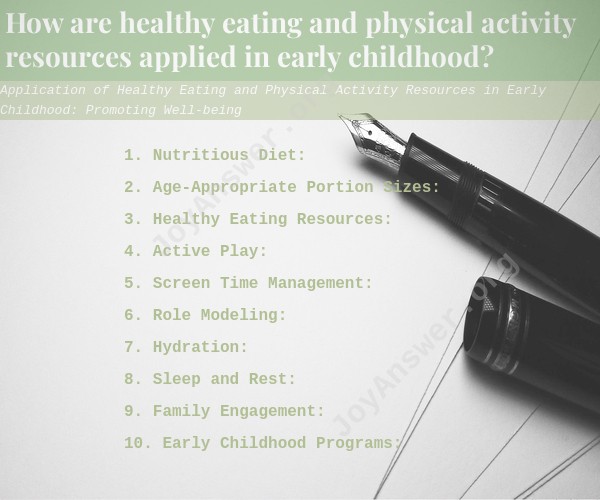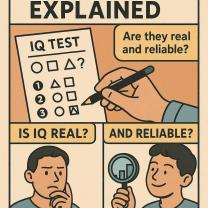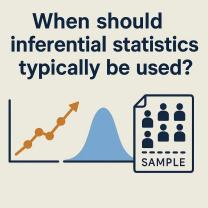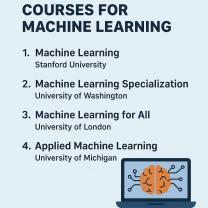How are healthy eating and physical activity resources applied in early childhood?
Promoting well-being through healthy eating and physical activity resources in early childhood is crucial for establishing lifelong habits and ensuring optimal growth and development. Early childhood is a critical period for shaping attitudes and behaviors towards food and physical activity. Here's how healthy eating and physical activity resources can be applied to promote well-being in early childhood:
1. Nutritious Diet:
- Provide balanced and age-appropriate meals and snacks that include a variety of nutrient-rich foods, such as fruits, vegetables, whole grains, lean proteins, and dairy products.
- Offer foods in their natural, unprocessed forms to provide essential vitamins, minerals, and dietary fiber.
- Encourage regular meal times and limit sugary and high-calorie snacks.
2. Age-Appropriate Portion Sizes:
- Serve appropriate portion sizes for young children to prevent overeating and support healthy growth.
- Use child-sized plates, bowls, and utensils to promote self-regulation of food intake.
3. Healthy Eating Resources:
- Provide educational materials and resources to parents, caregivers, and educators on the importance of nutrition in early childhood.
- Offer guidance on creating balanced meals, reading nutrition labels, and making healthy food choices.
4. Active Play:
- Incorporate regular physical activity into daily routines, both indoors and outdoors. Activities can include crawling, walking, running, jumping, and playing active games.
- Offer a variety of play equipment, such as balls, jump ropes, and climbing structures, to encourage movement and exploration.
5. Screen Time Management:
- Limit screen time and sedentary activities, such as watching TV or playing video games, for young children. Encourage interactive play instead.
- Set guidelines for screen time duration and ensure it doesn't interfere with physical activity and healthy eating habits.
6. Role Modeling:
- Adults should model healthy eating behaviors and an active lifestyle. Children are more likely to adopt healthy habits when they see their caregivers engaging in them.
7. Hydration:
- Promote drinking water as the primary beverage choice. Avoid sugary drinks and excessive fruit juices.
8. Sleep and Rest:
- Ensure that children get an adequate amount of quality sleep, as sleep is crucial for growth and overall well-being.
9. Family Engagement:
- Involve families in promoting healthy habits by providing resources, workshops, and opportunities for family-oriented physical activities and cooking sessions.
10. Early Childhood Programs:
- Collaborate with early childhood education programs to integrate nutrition education and physical activity into the curriculum.
By incorporating these strategies and resources, early childhood settings can create an environment that fosters healthy eating and physical activity habits, setting the foundation for a lifetime of well-being and health.













